How to Remove Plug in an Exercise Ball: Easy Steps
An exercise or stability ball is an awesome piece of equipment to work your core muscles…. until the ball starts to lose air!
When this happened to me the first time, I found that removing the plug to add air was a real struggle.
This led me to look for a solution!
I wasn’t about to buy another ball just because it delated.
It turned out that removing the plug was easier than I thought it would be.
So, if you’re someone that enjoys using an exercise ball in your home gym, read on.
In this article, I’ll share my tips for removing the valve when you don’t have a plug remover and how to easily inflate and deflate your ball without causing any damage to the ball.
I’ll also show you how to make sure that you have the right amount of air in your ball for your workout.
So, if you’re ready to make your exercise routine a little easier, let’s get started.
This post contains affiliate links. As an Amazon Associate, I earn from qualifying purchases. This means I may earn a commission, at no extra cost to you, should you choose to make a purchase using my link.
The Easiest Way to Remove the Valve of an Exercise Ball
When I first tried to remove the stopper from my exercise ball, I quickly realized it wasn’t as easy as I thought it would be.
It may have been easier if I hadn’t lost the plug remover that came with it!
So, after some after some trial and error, I found a method that worked perfectly for me.
Here are the steps I followed:
- Start by locating the valve on the stability ball.
- Sit on the ball with your legs on either side of the valve.
- Use your fingernails, a spoon, or a butter knife to work the item in between the valve and the ball.
- Avoid using sharp tools like screwdrivers or forks that could puncture or damage the ball.
- Begin to pull the valve upward while rocking your body back and forth on the ball.
- You will begin to feel the plug slowly loosening and then it should come right out from there.
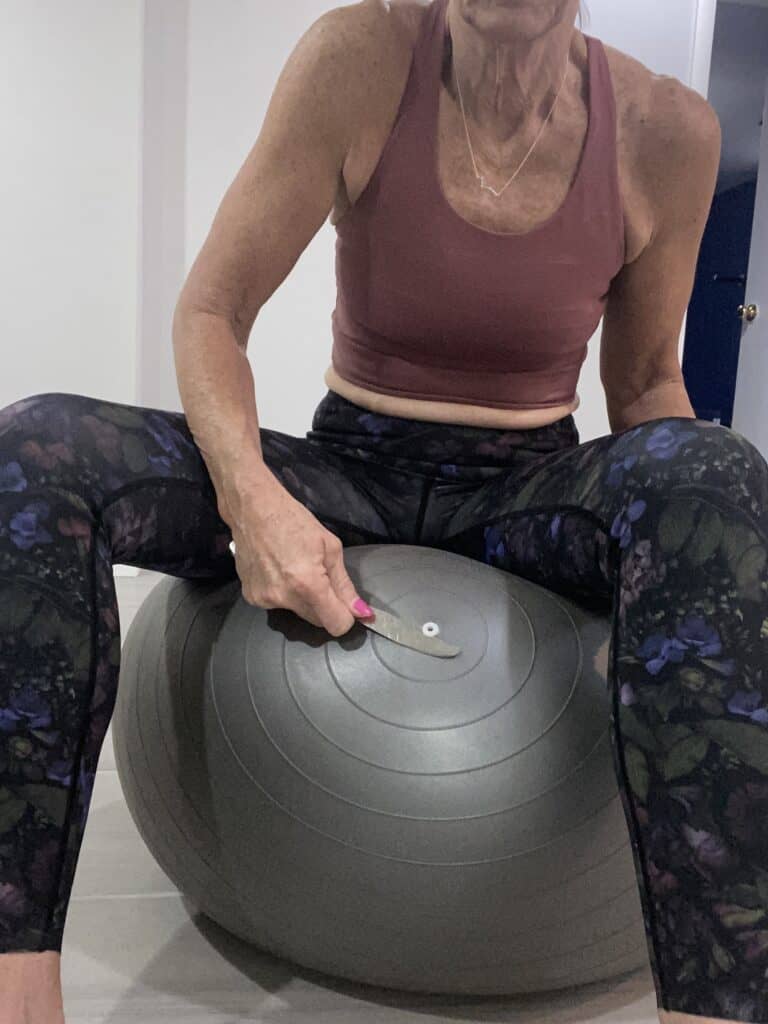
If you want to completely deflate the ball, staying on the ball may work better for you.
The pressure that you apply by sitting on it will make the air come out much faster.
However, if you are just wanting to add air to the ball, then you will want to get off the ball.
By following these steps, you can easily remove the valve from your exercise ball without damaging it.
Remember to be gentle and avoid using sharp tools that could puncture the ball.
How To Inflate Your Exercise Ball
There are many ways to inflate your exercise ball even if you don’t have a pump.
I will explain five different methods you can use to inflate your exercise ball.
A Tire Pump
If you have a bicycle tire pump lying around, you can use it to inflate your exercise ball.
First, insert the valve of the pump into the hole where the valve of the ball goes.
Then, start pushing the handle up and down until it is filled to the right diameter.
Once it is filled, remove the valve and replace the stopper so it is level with the ball.
A Hair Dryer
If you don’t have a pump, you can use a hair dryer to inflate your exercise ball.
Place the blow dryer over the hole for the valve and turn it on.
But remember, do not use hot air while doing this.
Use a cool setting instead. If not, it can burn up your hairdryer.
It can also make the ball seem like it is losing air when the air in the ball cools.
If this happens, you will need to start all over by removing the valve of the ball and add more air.
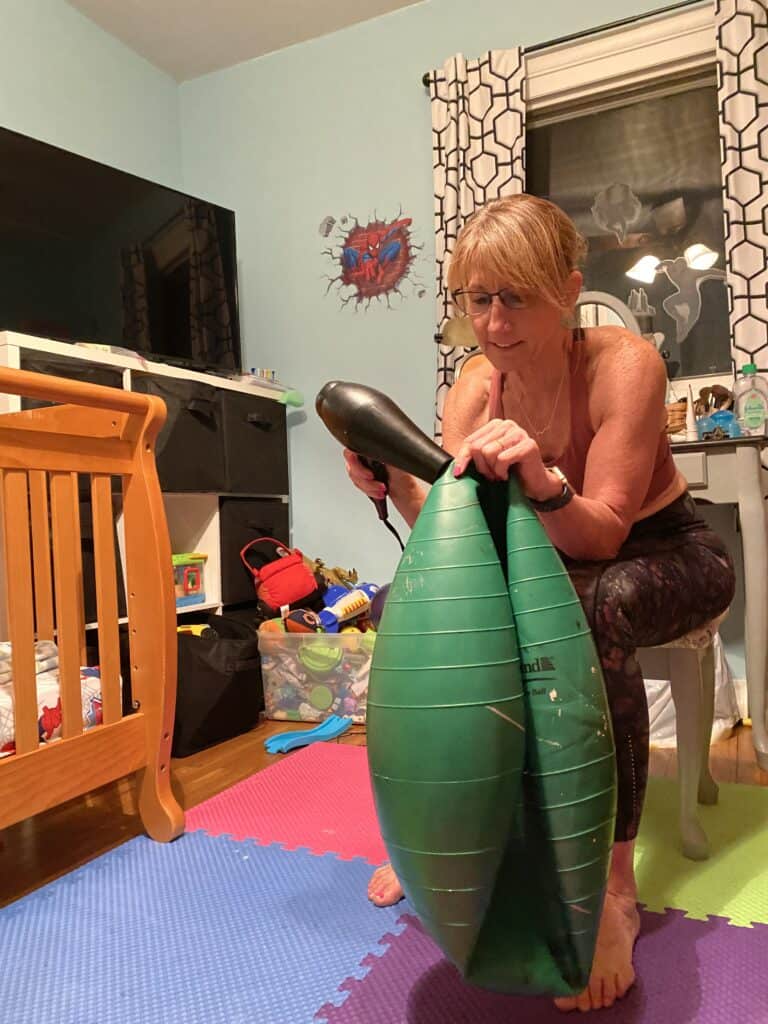
Electric Air Pump
If you own an air mattress and have the pump that came with it, you can use this to inflate your ball.
It works the same way as a pump.
Just place the valve of the pump into the hole where the ball valve goes and turn it on.
An Air Compressor
If you have an air compressor at home, this would work the best.
If you don’t have one, you could hop in the car with your ball and head to a gas station.
An air compressor is by far the easiest way to inflate your ball.
Just be very careful because it does deliver air a lot faster so you can overfill the ball or even pop the ball.
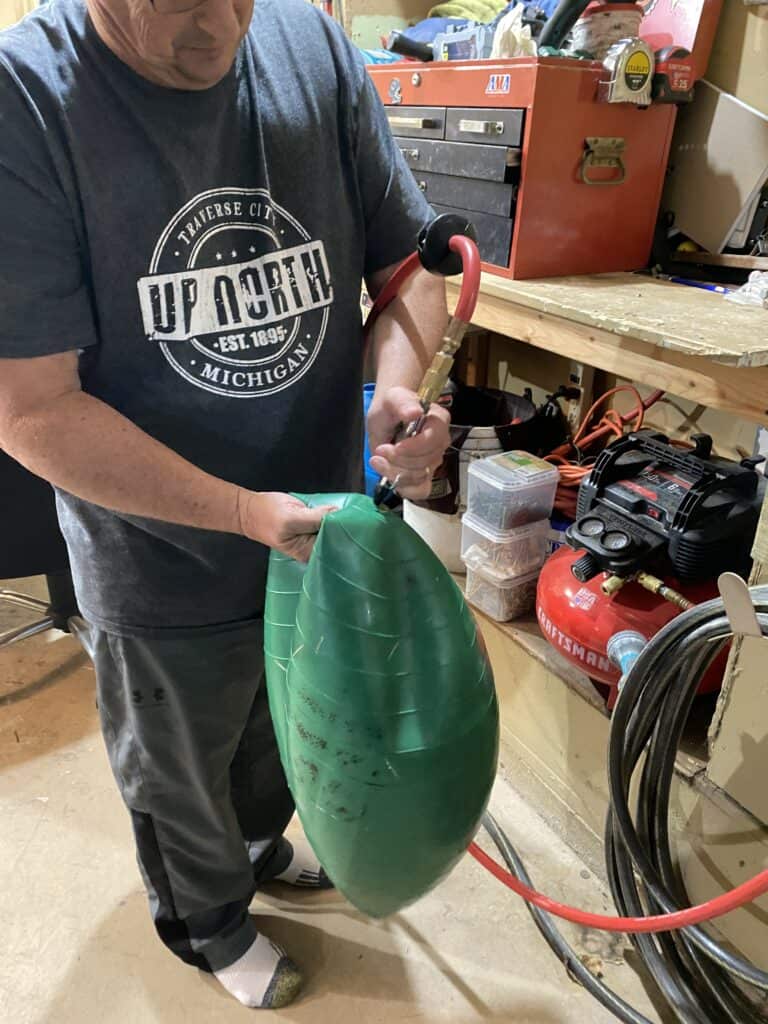
A Straw
If you don’t have any of the above items, you can use a straw to inflate your exercise ball.
Simply insert the straw into the hole where the valve of the ball goes and start blowing it up like you would a balloon.
This method requires a lot of hot air, but it does work great.
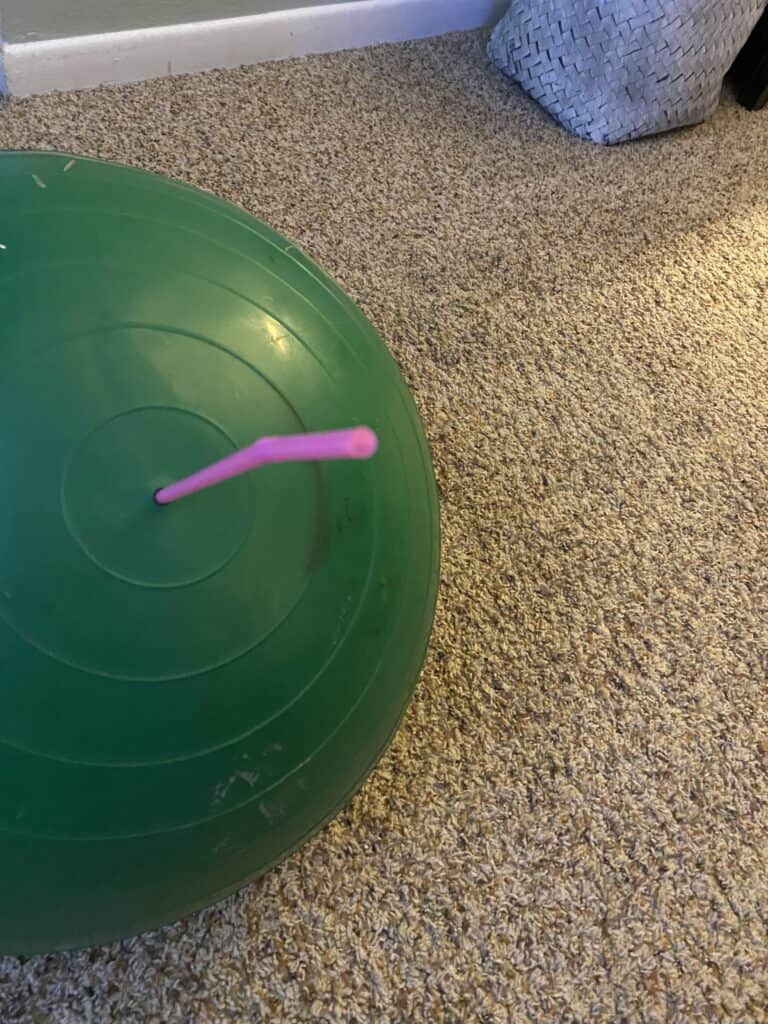
Now that you know how to inflate your exercise ball without a pump, you can start using these methods to keep your ball fully inflated and ready for your next workout.
How Do You Know When You Have Enough Air In Your Stability Ball?
As someone who has used a stability ball for exercise, I know how important it is to have the right amount of air in the ball.
Having too little air can damage the ball and make it difficult to use, while having too much air can cause the ball to stretch or even pop.
Here are some tips to help you determine if your stability ball has the right amount of air.
Determine the Size of Your Ball
Before you can determine if your stability ball has the right amount of air, you need to know what size ball you have.
Most standard exercise balls come in sizes of 45cm, 55cm, 65cm, 75cm, or 85cm.
You can usually find the size on the packaging or stamped on the ball itself.
If you can’t find the size, you can estimate it by filling the ball close to full and measuring its circumference or checking the distance from the wall.
Measure the Ball
One way to check if your stability ball has enough air is to measure it against a wall.
First, measure a piece of tape to the correct length and place it on the wall.
Then, put the exercise ball against the tape and check if the top of the ball is equal to the tape. If it is, then the ball has enough air.
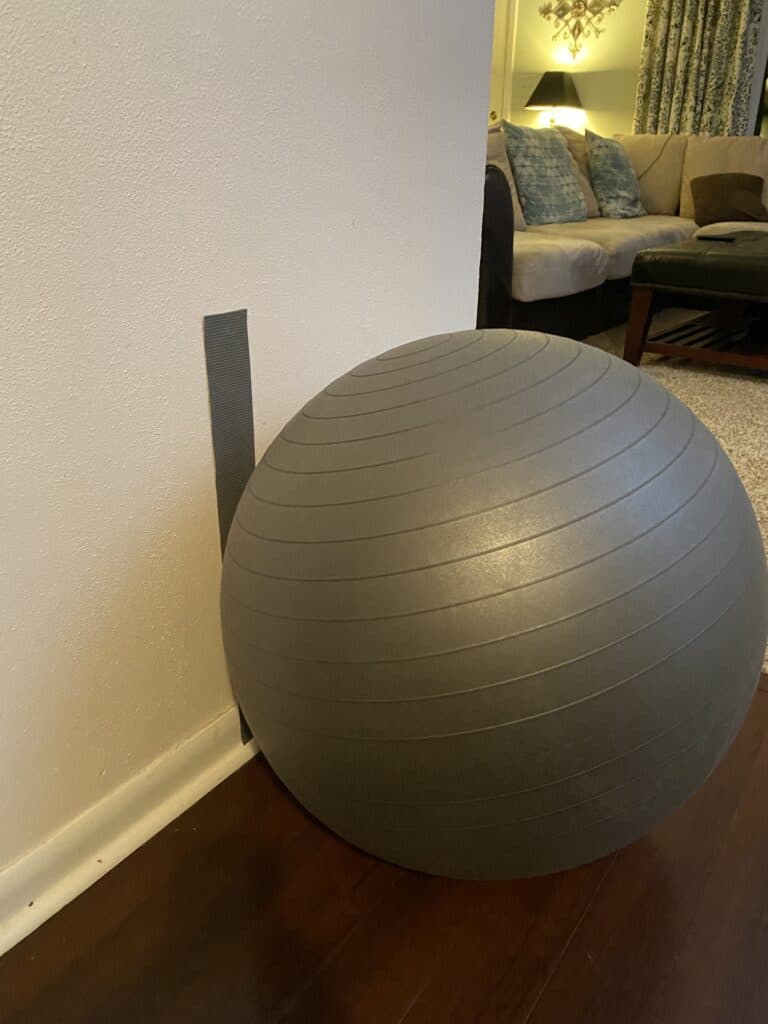
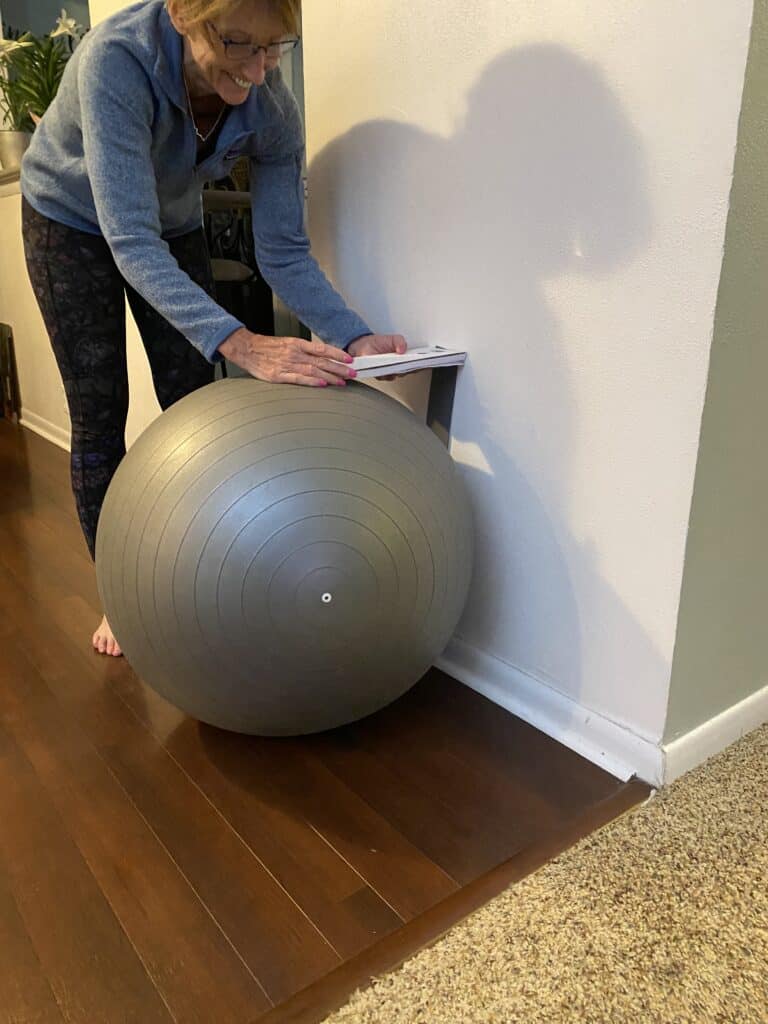
Do the Squish Test
Another way to check if your stability ball has the right amount of air is to do the squish test.
Sit on the ball and see if you sink into it.
If you do, the ball needs more air.
If it’s hard to bounce on the ball, you may want to let a little air out.
By using these simple tips, you can ensure that your stability ball has the right amount of air for a safe and effective workout.
Conclusion
An exercise ball is a versatile workout tool that can be used for a full-body workout.
It’s important to inspect the ball before every use to ensure it is free of weak spots and has proper air.
By taking care of the ball, it can last for a long time and provide an effective workout option.
